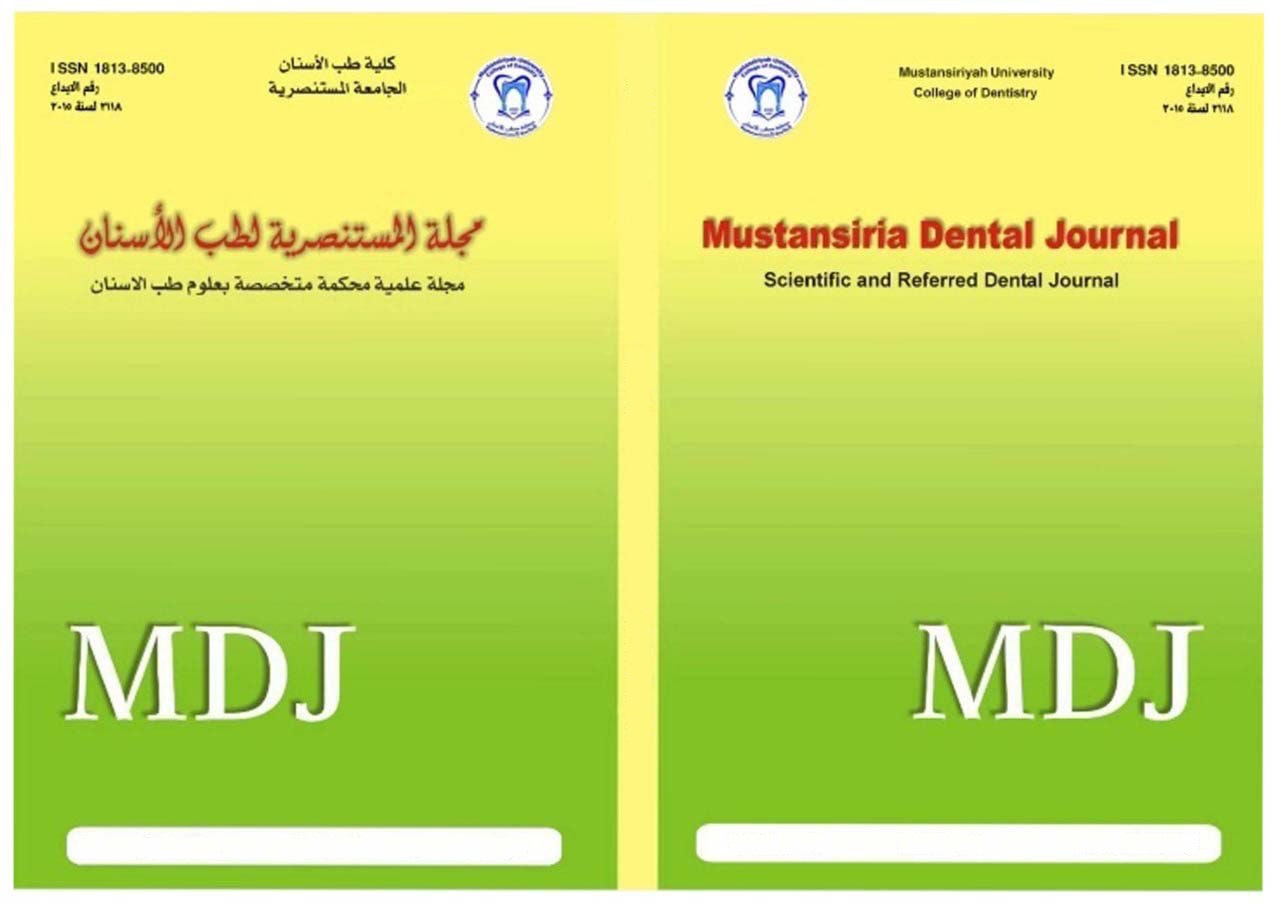Abstract
Background: This study was conducted to evaluate the sealing ability of (MTA Plus,
Biodentine Bioceramic root repair material) as an apical third filling by using
(Push-out bond strength test, apical microleakage test).
Materials and methods: Sixty straight palatal roots of the maxillary first molars teeth
were used in this study, the roots were instrumented by using crown down
technique with Protaper universal rotary system, the roots were randomly divided
into three groups according to the materials used for filling apical third
(n=20).Group (1): MTA Plus . Group (2): Biodentine. Group (3): Bioceramic
repair material. For all groups complete obturation with easy & quick obturation
system was used. After incubation period of three days ten roots for each group
were embedded in clear acrylic resin and each root sectioned in apical to provide
slice 2mm in thickness. The bond strength was measured using computerized
universal testing machine. Ten roots remain from each group used for apical
microleakage study. The roots submerged in 2% methylene blue for three days.
The roots were cleared and the degree of linear dye penetration was measured in
millimeter by stereomicroscope under 40 X magnification with calibrated scale
ocular grid. The data were analyzed statistically using ANOVA and LSD test.
Results: In push-out bond strength showed the Biodentine has the highest mean
values (19.687) in comparison with other groups followed by MTA Plus group
which the mean value was (19.395), while the BC material group has the lowest
mean value (10.977). In microleakage the BC material group has the high mean
values (0.477) of apical dye penetration in comparison with other groups.
Biodentine group has lowest mean values (0.359) of apical dye penetration.
Conclusions: The Biodentine higher push-out bond strength and less apical
microleakage then other test materials.
Biodentine Bioceramic root repair material) as an apical third filling by using
(Push-out bond strength test, apical microleakage test).
Materials and methods: Sixty straight palatal roots of the maxillary first molars teeth
were used in this study, the roots were instrumented by using crown down
technique with Protaper universal rotary system, the roots were randomly divided
into three groups according to the materials used for filling apical third
(n=20).Group (1): MTA Plus . Group (2): Biodentine. Group (3): Bioceramic
repair material. For all groups complete obturation with easy & quick obturation
system was used. After incubation period of three days ten roots for each group
were embedded in clear acrylic resin and each root sectioned in apical to provide
slice 2mm in thickness. The bond strength was measured using computerized
universal testing machine. Ten roots remain from each group used for apical
microleakage study. The roots submerged in 2% methylene blue for three days.
The roots were cleared and the degree of linear dye penetration was measured in
millimeter by stereomicroscope under 40 X magnification with calibrated scale
ocular grid. The data were analyzed statistically using ANOVA and LSD test.
Results: In push-out bond strength showed the Biodentine has the highest mean
values (19.687) in comparison with other groups followed by MTA Plus group
which the mean value was (19.395), while the BC material group has the lowest
mean value (10.977). In microleakage the BC material group has the high mean
values (0.477) of apical dye penetration in comparison with other groups.
Biodentine group has lowest mean values (0.359) of apical dye penetration.
Conclusions: The Biodentine higher push-out bond strength and less apical
microleakage then other test materials.
Keywords
Hardness
Heat cure acrylic denture base material
impact strength
thermosense denture base material
transverse strength.
